Yoga and medicine have a long-standing connection. It has been proven that yoga can reduce the symptoms of asthma. Ayurveda, a branch of Indian medicine, has a historical track record of successfully treating various ailments. In the case of asthma, yoga asanas provide a restorative therapy that aids in the healing process and revitalizes both the body and mind. Asthma is a condition characterized by narrowed airways and inflammation, resulting in difficulty breathing. By considering the oxygen supply to vital organs and promoting blood circulation, yoga plays a significant role in addressing this condition. Breathing exercises are crucial for asthma patients, and yoga effectively incorporates them. Overall, yoga is an excellent treatment option for asthma.
What is Asthma?
Asthma is a condition characterized by swelling of the tissues in the nasal cavity, which leads to the blockage of the airways. This blockage triggers the production of excessive mucus and can result in breathing difficulties. People with asthma often experience intermittent attacks. Although the symptoms of asthma may be mild and easily overlooked, early detection plays a crucial role in effectively managing the condition. If any of the following symptoms are observed, it is essential to consult a physician for evaluation and treatment.
Yoga Therapy for Asthma:
The practice of yoga offers numerous benefits for the entire body, including asthma patients who can greatly benefit from it. In this article, we will discuss nine different asthma treatments through yoga that can yield effective results.
Sukhasana / Easy Pose:
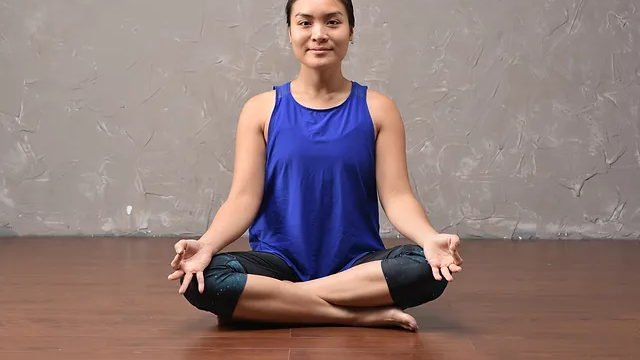
Sukhasana, also known as the easy pose, is a basic sitting position that promotes comfort and adequate oxygen intake. It is especially beneficial for asthma patients as it focuses on controlling breathing, which can provide relief for respiratory conditions.
To perform Sukhasana:
- Sit straight on a yoga mat with crossed legs.
- Ensure an upright spine and rolled-back shoulders.
- Place your arms on your knees and connect your index finger with your thumb.
- Maintain steady breathing and focus your gaze.
- Hold the pose for 5 minutes, preferably in the morning.
Setu Badha Sarvangasana / Bridge Pose:
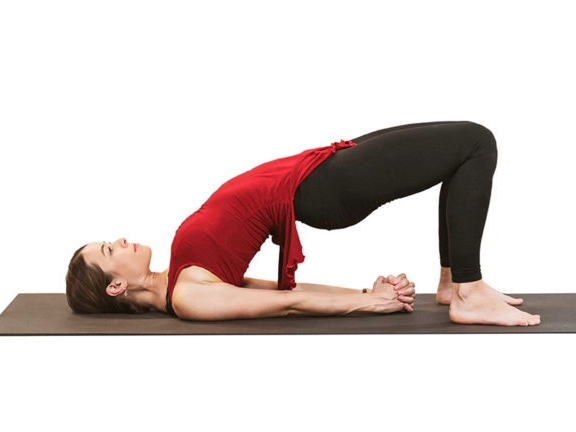
The bridge pose, known as Setu Badha Sarvangasana, aids in opening the lungs and facilitating better oxygen supply. It can help reduce swelling in the nasal cavity and provide benefits for asthma patients. Additionally, this pose contributes to improved metabolism.
To practice Setu Badha Sarvangasana:
- Lie down on a yoga mat with your arms by your sides.
- Bend your knees and rest your heels on the ground.
- Gradually lift your body from the waist, using your arms for support.
- Maintain a controlled breathing cycle.
- Hold the pose for 3-4 minutes and incorporate it into your daily routine with asthma.
Ardha Matsyendrasana / Sitting Half Spinal Twist:
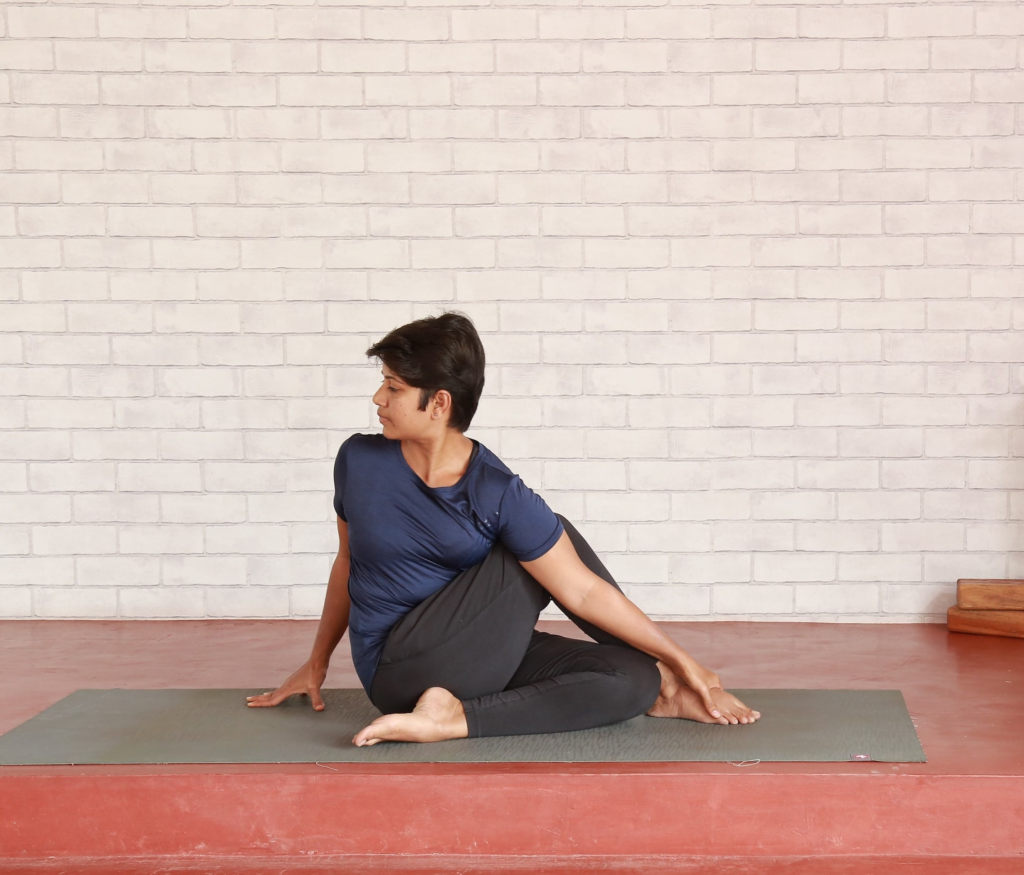
Ardha Matsyendrasana focuses on stretching the spine and engaging the back muscles, including the lungs. This yoga exercise helps regulate breathing and alleviate congestion caused by mucus, making it beneficial for asthma patients. However, it is crucial to practice under supervision and with consent from a doctor.
To perform Ardha Matsyendrasana:
- Sit on a yoga mat with your legs extended in front of you.
- Fold your right leg, bringing the foot near your pelvis.
- Cross your left leg over the right leg and plant it on the ground.
- Shift your body to the left and place your right hand on the ground.
- Press your left elbow against your right knee for a deeper stretch.
- Maintain focused vision and steady breath.
- Hold the pose for 4-5 minutes and incorporate it into your daily routine.
Upavistha Konasana / Seated Wide Angle Pose:
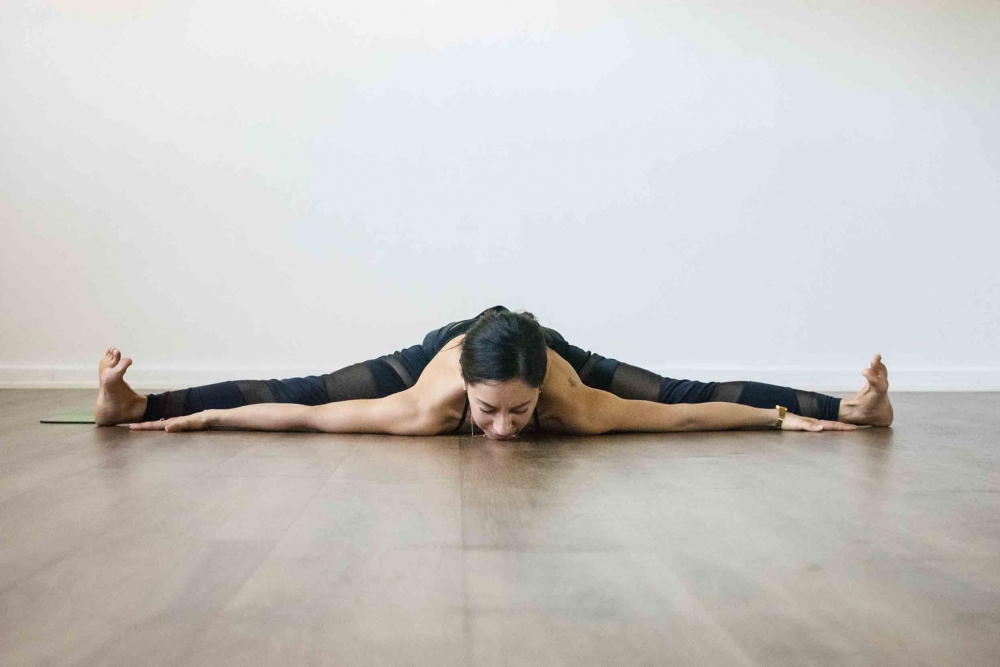
Upavistha Konasana involves stretching the legs and expanding the upper body, leading to improved lung capacity and increased oxygen flow to the nasal cavity. It is ideal to practice this pose in the morning before meals for optimal results. However, severe asthma cases require approval from a doctor before attempting this yoga asana.
To do Upavistha Konasana:
- Sit on a yoga mat with your legs stretched out in front of you.
- Slowly spread your legs sideways as far as comfortable.
- Bend forward from your hips and place your palms on the ground.
- Maintain a steady breathing cycle and focus your gaze.
- Hold the pose for 3-4 minutes and practice daily for optimal results with asthma.
Dhanurasana / Bow Pose:
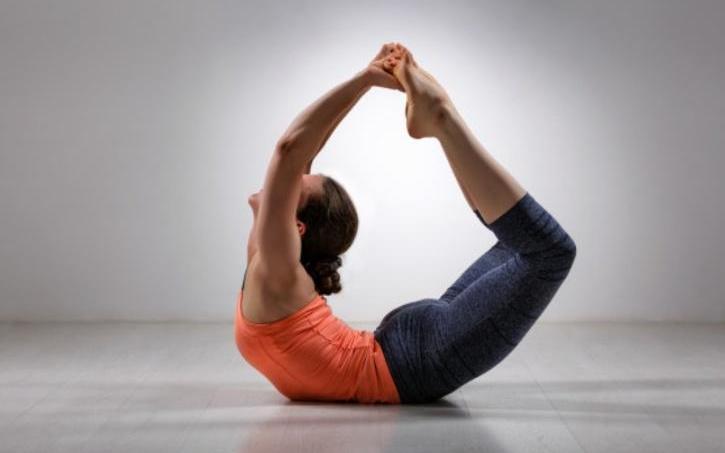
Dhanurasana resembles a bow shape when performed and stretches the upper body while providing abundant oxygen flow to the lungs, benefiting asthma patients. This pose also strengthens the spine, boosts the immune system, improves stamina, and regulates blood flow.
To practice Dhanurasana:
- Lie flat on your stomach on a yoga mat.
- Lift your legs behind, bending your knees and keeping your toes up.
- Hold your feet with both arms and lift your chest upward.
- Maintain a focused gaze and balance.
- Hold the pose for 4 minutes, ensuring proper breathing.
- Practice under supervision to prevent injuries.
Purvottanasana / Upward Plank Pose:
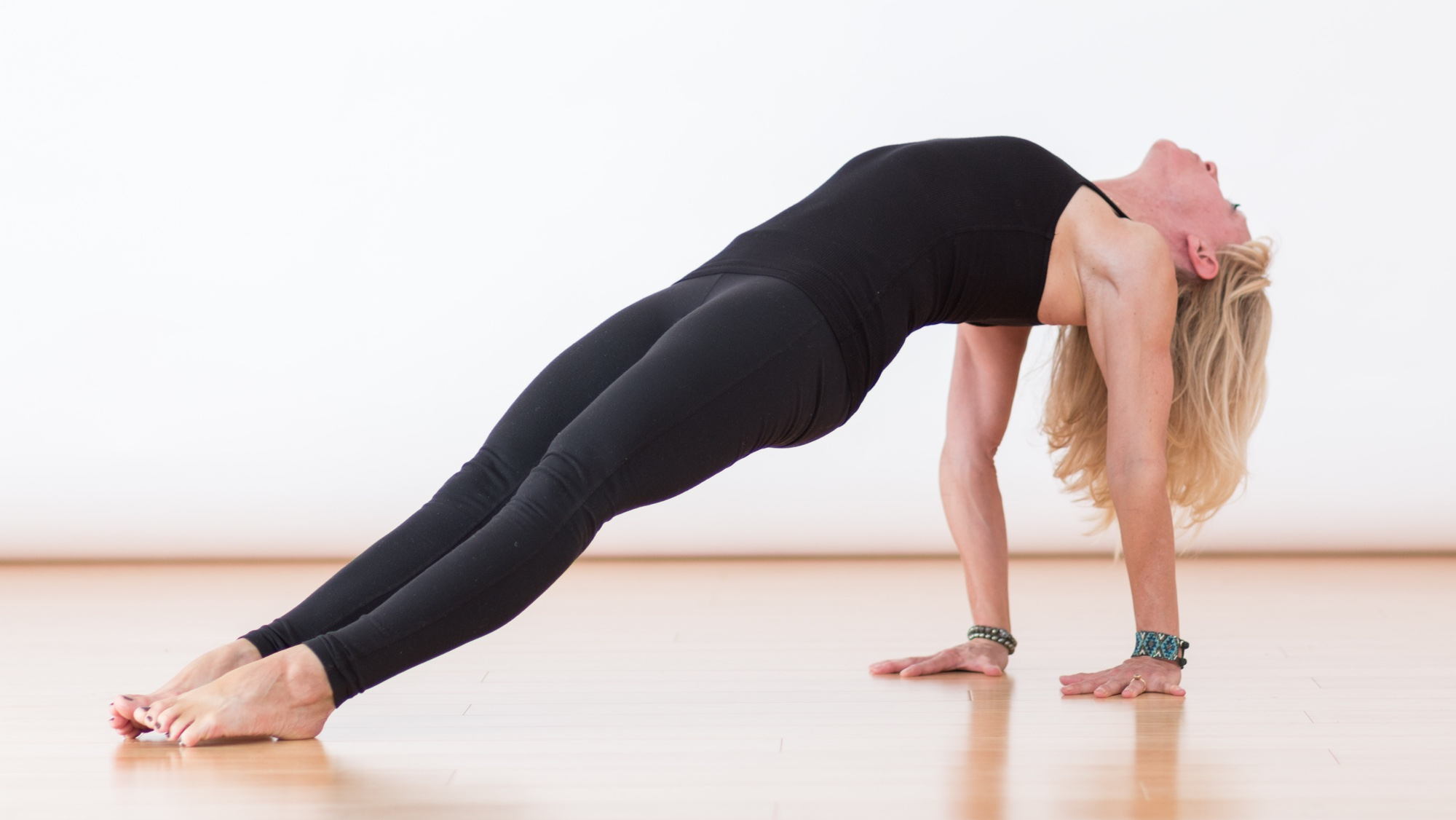
Purvottanasana, also known as the upward plank pose, is an advanced yoga pose that can aid in asthma treatment. It engages the lungs and nasal cavity tissues, promoting healing and regulating the respiratory system. It is recommended to practice this pose under supervision to enhance the healing process.
To perform Purvottanasana:
- Lie on your back with your arms near your head.
- Slowly lift your body, extending your legs and pointing your toes outward.
- Support your weight with your hands.
- Lean your head back to open up the airways in your lungs.
- Hold the pose for 3 minutes under supervision.
- Rest your back on the ground and take a moment to recover.
- Incorporate daily practice for optimal asthma treatment.
Kapalbhati Pranayama:

Kapalbhati is a breathing technique included in the branch of yoga known as Pranayama. It focuses on concentration, mindfulness, and breathing exercises. Kapalbhati is beneficial for asthma patients as it helps regulate the respiratory system without involving physical movements. It is particularly useful in reducing blockages in the nasal cavities.
To practice Kapalbhati:
- Sit with your legs crossed on a yoga mat.
- Place your hands on your knees and maintain an erect spine.
- Inhale slowly for four seconds.
- Exhale forcefully, observing the contraction of your abdomen.
- Repeat the process, inhaling slowly and exhaling with force while pulling your stomach in.
- Practice this exercise daily for 10 minutes to experience accelerated benefits.
Anulom Vilom Pranayama:
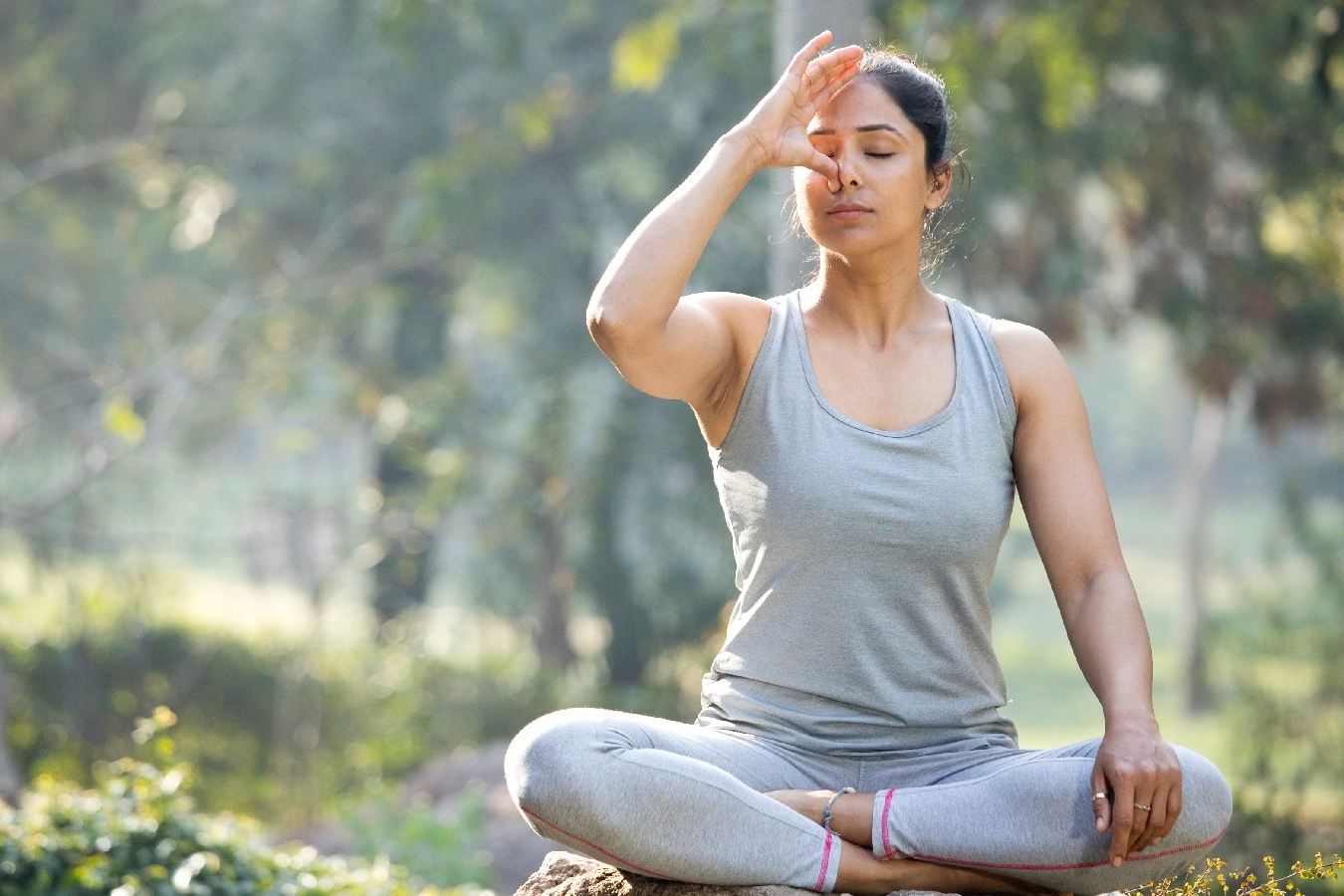
Anulom Vilom is another type of Pranayama that involves using alternate nostrils for inhalation and exhalation. It can be practiced by people of all ages and offers numerous benefits, including improving digestion and boosting the immune system. Regular practice of Anulom Vilom can be beneficial for asthma patients.
To perform Anulom Vilom:
- Sit comfortably with an erect spine.
- Use your right thumb to close your right nostril.
- Inhale through your left nostril.
- Close your left nostril with your ring finger.
- Exhale through your right nostril.
- Inhale through the same nostril and close it.
- Exhale through the left nostril.
- Repeat this rotation ten times daily.
- Practice in the morning for optimal results.
Shavasana / Corpse Pose:

Shavasana, also known as the corpse pose, is typically performed at the end of a yoga session. It involves lying down on your back, resembling a corpse, and allows for relaxation of the mind and body. Asthma patients can benefit from Shavasana as it helps open up the respiratory tract and facilitates recovery and normalization of breathing.
To practice Shavasana:
- Lie on your back with your arms by your sides.
- Keep your feet shoulder-width apart.
- Close your eyes and focus on your breathing.
- Hold the pose for 10 minutes at the end of your workout.
- Try to relax and observe your breathing patterns.
- Incorporate daily practice to reap the rejuvenating benefits of yoga.
It is crucial to consult a doctor to evaluate the severity of asthma before starting any yoga asanas for asthma. The mentioned yoga poses provide insights into the best yoga for asthma and instructions on their execution. Feel free to share your feedback in the comments section and let us know how these practices worked for you.
